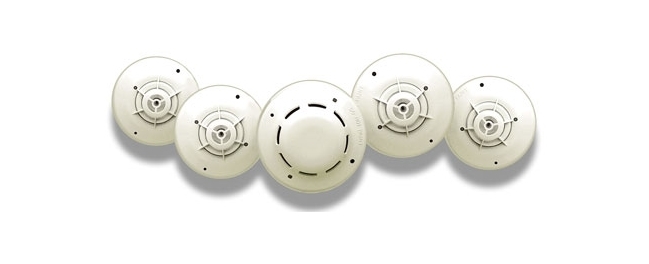
In order to learn where the fire broke out during the periods when the technology had not been yet very developed, the concept of “fire zone” has been determined and it has been deemed sufficient to give fire detection and warning as a group, regardless of the device from which the fire condition arises. In other words, in the display of the control panel of a conventional system, the information of the alarm or an error condition can be seen on a zone basis.
This is assured through an electrical circuit that bypasses every electronic device of the system in that zone. In an electrical circuit, 20 and 30 pcs. in average from the automatic fire detectors and fire warning buttons can be connected.
The conventional fire detectors determine the “fire alarm” condition according to whether the smoke or heat thresholds specified in the international standards have been exceeded. The perceived value (smoke or heat) generates an alarm directly and electrically regardless of speed and time, environmental conditions or a different logical process.
These systems do not have superiority over other systems. In the fire zones in specific sections of the buildings, they can provide an economic solution if the location of the fire can be clearly identified when entering into that zone. From a financial point of view, however, the comparison to be made with other systems should include not only the costs of the devices but also the whole system, including the cabling. In general, more cabling is expected in the conventional systems as compared to other systems.
It is a weakness that the location (addresses) of the devices cannot be determined individually in the conventional systems. In the buildings with a multi-partition structure, such as hotels, schools and dormitories, the determination of the location of the fire may be prolonged. Parallel warning lights can be used in order to avoid this situation. However, in this case, cabling and labor costs increase too much.
Another weakness of the conventional systems is that the detection methods of fire detectors are simple. These detectors, which are capable of detecting smoke or heat, may also give an alarm without exceeding a specific threshold value, for example due to contamination or dusting. These types of detectors can be set off in a short time in a room that is slowly filled with cigarette smoke. In such cases, they are likely to give false alarms.
Digital Addressable Fire Detection and Alarm Systems »
Fire Detection and Alarm Systems from Past to Today »
Digital Addressable Fire Detection and Alarm Systems »
Analogue Addressable Fire Detection and Alarm Systems »
Distributed Intelligent Interactive Fire Detection and Alarm Systems »